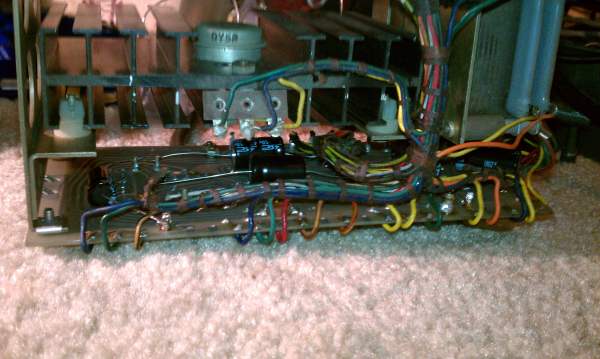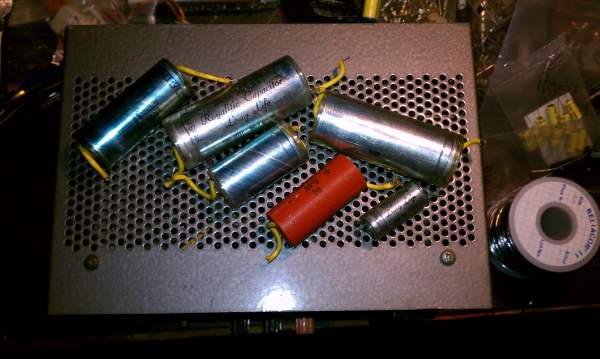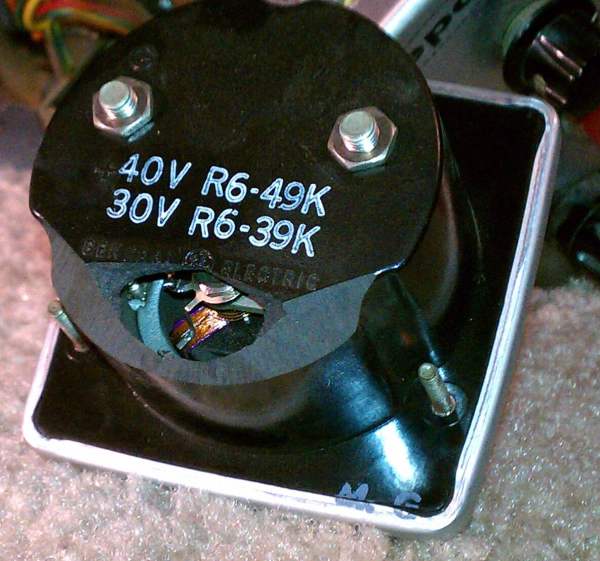
Many years ago I acquired an old power supply at a Hamfest for about $10. It was a variable 0-30 volt supply that provided a current of up to 300 milliamps. It had an adjustable current limiting control and voltage control. This power supply is excellent for bench testing prototypes and troubleshooting equipment and circuits.

I really took this supply for granted over the years because it just worked. Recently I went to use it and I couldn't get it to function properly. It gave erroneous readings and the meter would swing wildly.
I went on line to look for a schematic or manual but all I found were PDF downloads for about $20.00.
I decided to pull the cover to have a look see. It looked like 1960's vintage. All germanium semiconductors. Doorknob type power transistor. I suspected the filter capacitors. I ordered all five electrolytic capacitors and replaced them for less than five dollars.

You can see two of the black capacitors, obviously a lot smaller than the original. You can also see the doorknob power transistor in the upper part of the image.
Upon energizing the power supply it worked perfectly the first time.

These are the old capacitors that were pulled. I tried to measure the ESR and got no readings. I tried to measure the capacitance and got no readings either. They had all dried up opened up completely.
The last task was to zero the front panel meter. The adjustment on the front of the meter wouldn't zero the needle. Over the years the taut springs had relaxed to a point I couldn't zero it. Some meters also have another adjustment on the rear of the meter. This one didn't have one exposed. The meter was sealed and the front bezel of the meter was crimped on so it couldn't be removed. I removed the meter, grinded off a portion of the rear meter body to expose the adjustment.

I set the front adjustment to the center position and made a rear adjustment so the front adjustment allowed for proper centering either way. I covered the hole with aluminum duct tape to keep any dust or foreign objects out of the movement.
Most older electronic equipment have dried out electrolytic capacitors and must be replaced if you expect to use it again.
Copyright ©2013 Rick C.